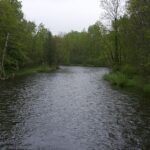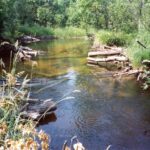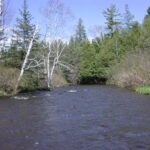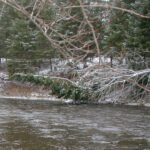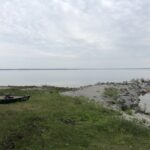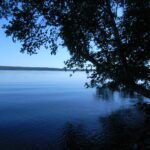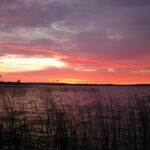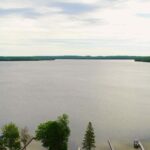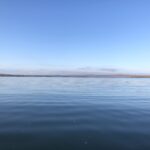Description:
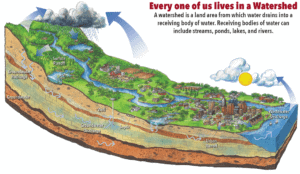
Geographic Description:
The Cheboygan River drains parts of Emmet, Cheboygan, Presque Isle, Charlevoix, Otsego, and Montmorency Counties at the northern tip of Michigan’s Lower Peninsula. The Cheboygan River itself is a short reach between Mullett Lake and the Straits of Mackinac, where the Cheboygan empties into Lake Huron. The drainage area of the Cheboygan River includes over 900,000 acres and numerous rivers and lakes. In addition to Mullett Lake, other large lakes include Douglas Lake, Burt Lake, Pickerel Lake, Crooked Lake, and Black Lake. The major rivers in the Cheboygan River drainage basin include the Crooked River, Maple River, Sturgeon River, Pigeon River, and Black River. Several of these systems are connected in what is called the Inland Waterway.
Numerous glacial retreats and advances define the irregular topography of this Watershed. The current landscape is a direct product of this ice scouring and redeposition, as well as postglacial erosion and soil formation processes. The resulting landscape is characterized by steep morainal ridges, rolling drumlins, kettle lakes, swamps, marshes, and depressions (Albert 1995).
Links to our Cheboygan River Watershed Partners:
- Headwaters Land Conservancy www.headwatersconservancy.org
- Huron Pine RC&D Council www.huronpines.org
- Little Traverse Conservancy www.landtrust.org
- Michigan Department of Natural Resources www.Michigan.gov/dnr
- NEMCOG (Northeast Michigan Council of Governments) www.nemcog.org
- The Nature Conservancy www.nature.org/Michigan
- Upper Black River Watershed Restoration Committee
PO Box 346, Atlanta, MI 49709
(517) 785-3453
Additional Publications:
| Title | Link |
|---|---|
| 2009 Survey Results and Management Recommendations For Phragmites and Quagga Mussels In the Cheboygan River Watershed |

